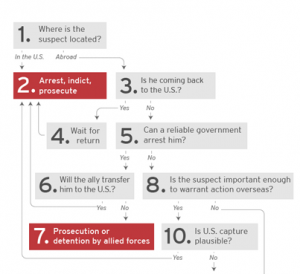“A Full Two Month Period” that Covers John Brennan’s Entire Drone Propaganda Campaign
In his letter to Eric Holder, AP’s President Gary Pruitt emphasized how inexcusably overbroad the call record seizure had been.
Last Friday afternoon, AP General Counsel Laura Malone received a letter from the office of United States Attorney Ronald C. Machen Jr. advising that, at some unidentified time earlier this year, the Department obtained telephone toll records for more than 20 separate telephone lines assigned to the AP and its journalists. The records that were secretly obtained cover a full two-month period in early 2012 and, at least as described in Mr. Machen’s letter, include all such records for, among other phone lines, an AP general phone number in New York City as well as AP bureaus in New York City, Washington, D.C., Hartford, Connecticut, and at the House of Representatives. This action was taken without advance notice to AP or to any of the affected journalists, and even after the fact no notice has been sent to individual journalists whose home phones and cell phone records were seized by the Department. [my emphasis]
AP’s most recent story on the seizure seems to suggest that “full two-month period” spanned April and May of last year.
In all, the government seized the records for more than 20 separate telephone lines assigned to AP and its journalists in April and May of 2012.
If so, it means the government grabbed phone records for Adam Goldman, Matt Apuzzo, Kimberly Dozier, Eileen Sullivan, and Alan Fram for three weeks after (and five weeks before) the UndieBomb 2.0 story Goldman and Apuzzo by-lined.
That would mean they’d get the sources for this Kimberly Dozier story published May 21 which starts,
White House counterterror chief John Brennan has seized the lead in guiding the debate on which terror leaders will be targeted for drone attacks or raids, establishing a new procedure to vet both military and CIA targets.
The move concentrates power over the use of lethal U.S. force outside war zones at the White House.
The process, which is about a month old, means Brennan’s staff consults the Pentagon, the State Department and other agencies as to who should go on the list, making a previous military-run review process in place since 2009 less relevant, according to two current and three former U.S. officials aware of the evolution in how the government targets terrorists.
Within 10 days of the time Dozier published that story, John Brennan had rolled out an enormous propaganda campaign — based on descriptions of the drone targeting process that Brennan’s power grab had replaced, not the new drone targeting process — that suckered almost everyone commenting on drones that drone targeting retained its previous, more deliberative, targeting process, the one Brennan had just changed.
And that propaganda campaign, in turn, hid another apparent detail: that UndieBomb 2.0, a Saudi sting had actually occurred earlier in April, and that UndieBomb 2.0 preceded and perhaps justified the signature strikes done at the behest of the Yemenis (or more likely the Saudis).
April 18: Greg Miller first reports on debate over signature strikes
Around April 20: UndieBomb 2.0 device recovered
Around April 22: John Brennan takes over drone targeting from JSOC
April 22: Drone strike that–WSJ reports, “Intelligence analysts [worked] to identify those killed” after the fact, suggesting possible signature strike
April 24: Robert Mueller in Yemen for 45 minute meeting, presumably to pick up UndieBomb
April 25: WSJ reports that Obama approved use of signature strikes
April 30: John Brennan gives speech, purportedly bringing new transparency to drone program, without addressing signature strikes
May 6: Fahd al-Quso killed
May 7: AP reports on UndieBomb 2.0
May 8: ABC reports UndieBomb 2.0 was Saudi-run infiltrator
May 15: Drone strike in Jaar kills a number of civilians
Now, frankly, I think the witch hunt response to the UndieBomb 2.0 plot was mostly just an excuse to start investigating the AP, though it did lead John Brennan to make it clear that it was a Saudi-manufactured plot in the first place.
But the response to that Dozier article, which provided the final piece of evidence for the timeline above showing Brennan grabbed control of drone targeting at roughly the moment we started signature strikes in Yemen, was more dramatic, at least in terms of the breathtaking propaganda the White House rolled out to pretend the drone strikes were more orderly than they actually were.
I’m guessing, but when Pruitt says this,
These records potentially reveal communications with confidential sources across all of the newsgathering activities undertaken by the AP during a two-month period, provide a road map to AP’s newsgathering operations, and disclose information about AP’s activities and operations that the government has no conceivable right to know.
I’m guessing he might have other AP stories in mind.
I know I’m as least as worried about DOJ targeting Dozier’s sources, who revealed a critical detail of how illegal the drone program was, as I am about the original UndieBomb 2.0 story.

